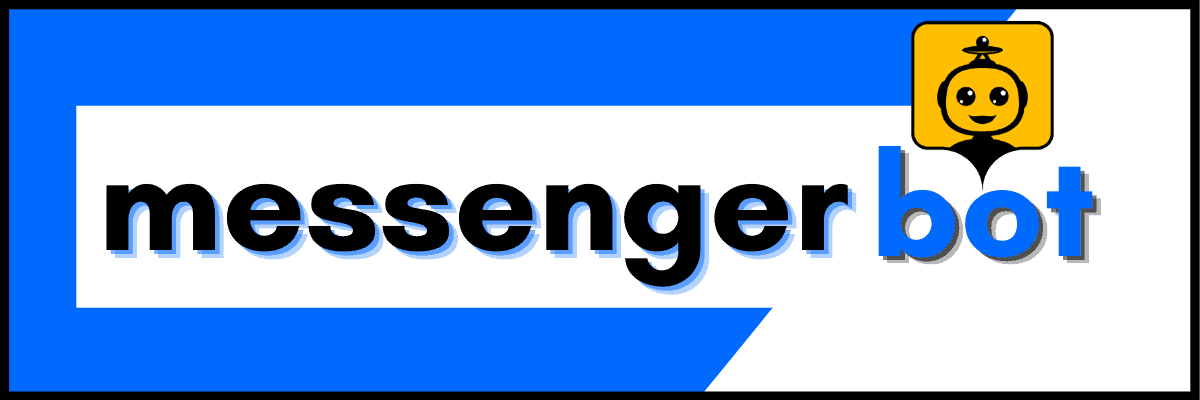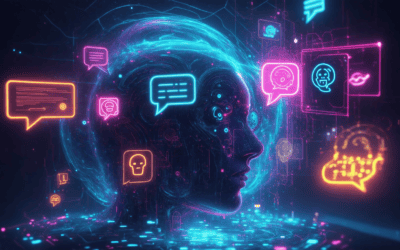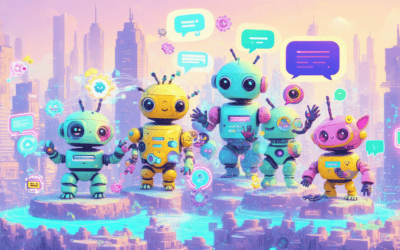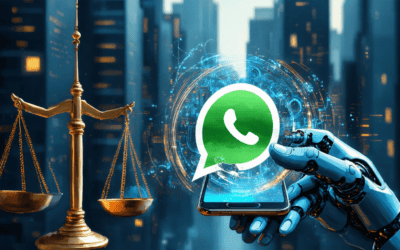In the ever-evolving landscape of digital communication, chatbot conversations have emerged as a pivotal technology, revolutionizing how businesses interact with customers and how individuals engage with artificial intelligence. From simple bot chats to sophisticated conversational AI chatbots, the realm of chatbot technology has expanded exponentially, offering a myriad of applications across industries. This article delves into the intricacies of mastering chatbot conversations, exploring everything from fundamental chatbot templates to advanced AI-driven dialogues. Whether you’re curious about free AI chatbots you can talk to or seeking to implement conversational agents in your business, we’ll guide you through the essentials of chatbot conversation design, showcase successful chatbot examples, and unveil the future of this transformative technology.
Understanding Chatbot Conversations
Chatbot conversations are at the heart of modern digital interactions, revolutionizing the way businesses communicate with their customers. As a leading provider of conversational AI solutions, we at Messenger Bot understand the intricacies of these dialogues and their impact on user engagement.
A chatbot conversation is an exchange between a user and an artificial intelligence program designed to simulate human-like responses. These interactions can range from simple question-answering to complex problem-solving, all aimed at enhancing user experience and streamlining communication processes.
What is a conversation in a chatbot?
A conversation in a chatbot context refers to the back-and-forth communication between a user and an AI-powered system. These dialogues are structured to mimic human conversation, incorporating natural language processing (NLP) to understand user intent and generate appropriate responses. Key elements of chatbot conversations include:
- User input interpretation
- Context retention
- Response generation
- Continuous learning and improvement
Our AI-driven chatbot features are designed to create seamless conversational experiences across various platforms, including Facebook Messenger and Instagram. By leveraging advanced algorithms, we ensure that each interaction is meaningful and tailored to the user’s needs.
Exploring the fundamentals of chatbot dialogue systems
Chatbot dialogue systems are the backbone of conversational AI, encompassing a range of technologies that enable machines to understand and respond to human language. These systems typically include:
- Natural Language Understanding (NLU): Interprets user input and extracts meaning.
- Dialogue Management: Maintains the flow and context of the conversation.
- Natural Language Generation (NLG): Formulates coherent and contextually appropriate responses.
- Knowledge Base: Stores information and rules for generating accurate replies.
At Messenger Bot, we’ve refined these fundamentals to create a powerful chatbot platform that businesses can set up in minutes. Our system utilizes cutting-edge NLP techniques to ensure that conversations feel natural and engaging, promoting better user satisfaction and increased conversion rates.
By understanding the core components of chatbot conversations and dialogue systems, businesses can harness the full potential of conversational AI to enhance customer interactions, streamline support processes, and drive growth in the digital age.

Free AI Chatbots and Their Capabilities
As the demand for chatbot conversations continues to grow, many users are seeking free AI chatbots to engage with. The good news is that there are indeed several options available for those looking to experience artificial intelligence chat without spending a dime.
Is there an AI I can talk to for free?
Yes, there are multiple free AI chatbots available for conversation. These artificial intelligence online chat platforms offer varying degrees of sophistication and capabilities. Some popular options include:
- Pandorabots: A platform that allows users to create and interact with chatbots for free.
- Replika: An AI companion app that offers free conversations and emotional support.
- Cleverbot: A web-based AI that learns from human interactions and engages in open-ended conversations.
While these free options provide a great starting point, for businesses seeking more advanced features and customization, Messenger Bot offers a comprehensive solution that goes beyond basic chat functionalities.
Comparing popular free chatbot conversation apps
When exploring free chatbot options, it’s essential to consider their capabilities and limitations. Here’s a brief comparison of some popular free chatbot conversation apps:
- Replika: Known for its emotional intelligence, Replika excels in personal conversations and emotional support. However, it may lack specific knowledge for business or technical queries.
- Cleverbot: This chatbot is adept at general conversations and can be quite entertaining. Yet, it may struggle with maintaining context in longer exchanges.
- Mitsuku: Winner of multiple Loebner Prize competitions, Mitsuku offers engaging conversations but may not be suitable for specific business applications.
While these free options provide a taste of conversational AI chatbots, they often lack the advanced features required for business use. For instance, our Messenger Bot platform offers multilingual support, e-commerce integration, and sophisticated workflow automation, which are crucial for businesses looking to leverage chatbots for customer engagement and support.
It’s important to note that while free chatbots can be fun and educational, they may not always provide the level of security and privacy needed for sensitive conversations. For businesses considering chatbot implementation, it’s worth exploring more robust solutions that offer enhanced security measures and customization options.
As the field of conversational AI continues to evolve, we’re seeing remarkable advancements in dialogue agents and NLP. These improvements are making chatbot conversations increasingly natural and helpful, bridging the gap between human-like interaction and artificial intelligence chat capabilities.
III. Engaging with Chatbots: User Interaction
Engaging with chatbots has become an increasingly common experience in our digital world. As AI-powered conversation systems continue to evolve, the interactions between humans and chatbots are becoming more sophisticated and natural. Let’s explore how users can effectively engage with chatbots and the range of topics these digital assistants can handle.
A. Can you talk to a chatbot?
Yes, you can absolutely talk to a chatbot. Modern chatbots are designed to engage in conversational dialog, mimicking human-like interactions. These conversational AI bots use natural language processing (NLP) to understand and respond to user inputs in a coherent manner. Whether you’re seeking customer support, looking for product recommendations, or simply wanting to chat, today’s chatbots are equipped to handle a wide range of conversations.
Platforms like ChatGPT have popularized the concept of open-ended conversations with AI, demonstrating the capability of chatbots to engage in complex dialogues. However, it’s important to remember that while chatbots can provide human-like responses, they are still artificial constructs and may have limitations in understanding context or nuance.
B. Chatbot conversation topics and question types
Chatbots can handle a diverse array of conversation topics and question types, making them versatile tools for various industries and applications. Here are some common areas where chatbots excel:
- Customer Support: Chatbots can answer frequently asked questions, troubleshoot common issues, and guide users through processes like returns or account setup.
- Product Recommendations: By analyzing user preferences and purchase history, chatbots can suggest relevant products or services.
- Appointment Scheduling: Many chatbots can help users book appointments, making them invaluable for healthcare and service industries.
- Information Retrieval: Chatbots can quickly fetch specific information from large databases, such as weather forecasts, sports scores, or stock prices.
- General Knowledge: Some advanced chatbots, like those powered by large language models, can engage in discussions on a wide range of topics, from history to science.
When it comes to question types, chatbots are typically adept at handling:
- Closed-ended questions (yes/no or multiple choice)
- Open-ended questions requiring short, factual answers
- Procedural questions about how to do something
- Clarification requests
- Comparison queries
To get the most out of your chatbot interactions, it’s helpful to phrase your questions clearly and concisely. While many chatbots can handle complex queries, starting with simpler questions often leads to more accurate responses. As chatbot technology continues to advance, we can expect even more sophisticated conversational AI examples to emerge, further blurring the line between human and AI communication.
At Messenger Bot, we’re committed to providing cutting-edge chatbot solutions that can engage in meaningful conversations across various platforms. Our AI-driven chatbots are designed to understand context, learn from interactions, and provide valuable assistance to users, making them an essential tool for businesses looking to enhance their customer engagement strategies.
IV. Leading Chatbot Platforms and Technologies
As chatbot conversations become increasingly sophisticated, several platforms have emerged as leaders in the field. These advanced conversational AI chatbots are revolutionizing how businesses interact with their customers, providing seamless and efficient communication around the clock.
A. What is the most popular chatbot?
While popularity can be subjective, some chatbots have gained significant recognition in recent years. ChatGPT, developed by OpenAI, has become a household name due to its impressive language understanding and generation capabilities. However, other platforms like Messenger Bot have also gained traction for their specialized features and ease of integration with popular messaging platforms.
In the business sphere, platforms like Intercom and Drift have become popular for their customer service and lead generation capabilities. These conversational AI bots offer advanced features like natural language processing and integration with CRM systems, making them valuable tools for businesses of all sizes.
B. ChatGPT and other advanced conversational AI chatbots
ChatGPT represents a significant leap forward in conversational AI technology. Its ability to understand context, generate human-like responses, and engage in complex dialogues has set a new standard for AI chatbots. However, it’s not alone in pushing the boundaries of what’s possible with chatbot conversations.
Other notable advanced conversational AI chatbots include:
- IBM Watson Assistant: Known for its enterprise-level capabilities and deep learning algorithms.
- Microsoft Copilot: Integrated with Microsoft’s suite of productivity tools, offering contextual assistance.
- Google’s Dialogflow: Provides a platform for building conversational interfaces for websites, mobile applications, and popular messaging platforms.
At Messenger Bot, we’ve developed our own advanced AI chatbot that combines the best of these technologies with specialized features for social media management and customer engagement. Our AI-powered customer service bots are designed to elevate your brand’s support experience, offering multilingual support and seamless integration with platforms like Facebook and Instagram.
As the field of conversational AI continues to evolve, we can expect even more sophisticated chatbot conversations in the future. These advancements will likely include improved emotional intelligence, better context understanding, and more seamless integration with various business processes, further enhancing the user experience and efficiency of chatbot interactions.

V. Designing Effective Chatbot Conversations
Designing effective chatbot conversations is crucial for creating engaging and successful conversational AI experiences. By focusing on chatbot conversation flow and user experience, businesses can enhance customer interactions and drive better results. Let’s explore the key elements of designing impactful chatbot conversations and how to utilize chatbot templates and conversation flows effectively.
A. Chatbot conversation flow and user experience
A well-designed chatbot conversation flow is essential for providing a seamless user experience. To create an effective flow, consider the following aspects:
1. Clear objectives: Define the purpose of your chatbot and outline specific goals for each conversation. This helps in creating focused and relevant dialogues.
2. Natural language processing: Implement advanced NLP techniques to understand user intent and respond accurately. This enables your chatbot to handle complex queries and maintain context throughout the conversation.
3. Personalization: Tailor responses based on user preferences, history, and behavior to create a more personalized experience. This can significantly improve user engagement and satisfaction.
4. Error handling: Anticipate potential misunderstandings or errors and design appropriate fallback responses. This helps maintain a smooth conversation even when the chatbot encounters unexpected inputs.
5. Conversational design: Structure your chatbot’s responses in a conversational manner, using a friendly tone and appropriate language. This creates a more natural and engaging interaction for users.
By focusing on these elements, you can create a chatbot conversation flow that enhances user experience and drives better results for your business.
B. Utilizing chatbot templates and conversation flows
Chatbot templates and pre-designed conversation flows can significantly streamline the process of creating effective chatbot interactions. Here’s how to make the most of these resources:
1. Choose the right template: Select a chatbot template that aligns with your specific use case, whether it’s customer support, lead generation, or product recommendations. This provides a solid foundation for your chatbot’s functionality.
2. Customize and adapt: Tailor the template to fit your brand voice and specific requirements. Modify the conversation flow to address your unique business needs and customer preferences.
3. Implement conversation flows: Utilize pre-designed conversation flows for common scenarios, such as FAQs, product inquiries, or booking appointments. These flows can help guide users through specific processes efficiently.
4. A/B testing: Experiment with different conversation flows and templates to identify the most effective approach for your audience. Continuously refine and optimize based on user feedback and performance metrics.
5. Integration with existing systems: Ensure that your chosen templates and flows can seamlessly integrate with your current systems, such as CRM or e-commerce platforms, to provide a cohesive user experience.
By leveraging chatbot templates and conversation flows, businesses can quickly deploy effective chatbot solutions while maintaining flexibility for customization. This approach allows for rapid implementation of conversational AI chatbots while ensuring a high-quality user experience.
Platforms like Dialogflow and Botpress offer extensive libraries of templates and flows that can be easily adapted to various industries and use cases. By combining these resources with our AI-powered automation platform, businesses can create sophisticated chatbot experiences that drive engagement and deliver tangible results.
VI. Implementing Conversational AI in Business
Implementing conversational AI in business has become a game-changer for customer service and engagement. As we continue to innovate and improve our Messenger Bot platform, we’ve observed and developed best practices that can help businesses maximize the potential of chatbot conversations.
A. Best practices for chatbot conversation design
When designing chatbot conversations, it’s crucial to focus on creating a natural, engaging dialogue that meets user needs efficiently. Here are some key best practices:
1. Define clear objectives: Before designing your chatbot, establish specific goals for what you want it to achieve. This could range from answering FAQs to guiding users through a purchase process.
2. Understand your audience: Tailor your chatbot’s personality and language to match your target audience’s preferences and expectations.
3. Keep it simple: Use clear, concise language and avoid jargon. Break complex processes into smaller, manageable steps.
4. Provide options: Offer users multiple-choice responses or buttons to guide the conversation and reduce potential misunderstandings.
5. Implement conversation flows: Design logical conversation paths that anticipate user needs and guide them towards their goals. Our Messenger Bot tutorials can help you create effective conversation flows.
6. Use context effectively: Leverage user data and previous interactions to personalize conversations and provide relevant responses.
7. Offer human handoff: Always provide an option for users to connect with a human agent for complex issues or when the chatbot can’t resolve their query.
8. Continuous improvement: Regularly analyze chatbot performance and user feedback to refine and improve your conversational AI.
B. Successful chatbot examples in various industries
Across different sectors, businesses are leveraging chatbots to enhance customer experience and streamline operations. Here are some notable examples:
1. E-commerce: Amazon’s chatbot helps customers track orders, process returns, and find products. Our Messenger Bot features include e-commerce tools that can similarly enhance online shopping experiences.
2. Banking: Bank of America’s Erica assists customers with account inquiries, bill payments, and financial advice.
3. Healthcare: Babylon Health’s chatbot provides initial health assessments and connects patients with appropriate care.
4. Travel: Kayak’s chatbot helps users find flights, hotels, and rental cars based on their preferences and budget.
5. Food Service: Domino’s Pizza bot allows customers to place orders, track deliveries, and access deals directly through chat interfaces.
6. Customer Support: Zendesk’s Answer Bot provides instant responses to common customer queries, improving response times and customer satisfaction.
7. Human Resources: Mya Systems’ chatbot streamlines the recruitment process by screening candidates and scheduling interviews.
These examples demonstrate the versatility of chatbots across industries. At Messenger Bot, we’ve seen similar success stories from our clients who have implemented our AI-driven chatbot solutions to enhance their customer interactions and streamline business processes.
By following best practices and learning from successful implementations, businesses can harness the power of conversational AI to improve customer engagement, increase efficiency, and drive growth. Our free trial offer allows businesses to experience firsthand how our chatbot solutions can transform their customer interactions.
VII. The Future of Chatbot Technology
The future of chatbot technology is rapidly evolving, with advancements in artificial intelligence and natural language processing paving the way for more sophisticated and human-like conversational experiences. As we continue to push the boundaries of what’s possible with chatbots, we’re seeing exciting developments that promise to revolutionize how we interact with AI-powered assistants.
A. Advancements in dialogue agents and NLP
Natural Language Processing (NLP) is at the heart of chatbot technology, and recent breakthroughs are making dialogue agents more intelligent and context-aware. These advancements are enabling chatbots to understand and respond to complex queries with greater accuracy and nuance.
One of the most significant developments is the improvement in contextual understanding. Modern dialogue agents can now maintain context throughout a conversation, remembering previous interactions and using that information to provide more relevant responses. This allows for more natural, flowing conversations that closely mimic human-to-human interactions.
Another area of advancement is sentiment analysis. Chatbots are becoming increasingly adept at detecting and responding to user emotions, allowing for more empathetic and personalized interactions. This emotional intelligence is crucial for applications in customer service and mental health support.
Multilingual capabilities are also expanding rapidly. Multilingual chatbots are breaking down language barriers, allowing businesses to communicate with a global audience seamlessly. These systems can now understand and respond in multiple languages, often switching between them within the same conversation.
Brain Pod AI is at the forefront of these advancements, offering cutting-edge NLP technologies that power sophisticated chatbots capable of engaging in complex, multilingual conversations.
B. Emerging trends in conversational AI and bot chats
As we look to the future of chatbot technology, several exciting trends are emerging that will shape the landscape of conversational AI:
1. Voice-enabled chatbots: With the rise of smart speakers and voice assistants, chatbots are increasingly integrating voice recognition and synthesis capabilities. This allows for more natural, hands-free interactions across various devices and platforms.
2. Multimodal interactions: Future chatbots will likely combine text, voice, and visual elements to create richer, more engaging experiences. This could include the ability to recognize and respond to images, videos, or even gestures.
3. Personalization at scale: AI-powered chatbots will become increasingly adept at tailoring their responses and recommendations based on individual user preferences and behavior patterns. This level of personalization will make interactions feel more relevant and valuable to users.
4. Integration with IoT devices: As the Internet of Things (IoT) expands, chatbots will play a crucial role in controlling and managing smart home devices, vehicles, and other connected technologies through natural language commands.
5. Improved self-learning capabilities: Future chatbots will likely have enhanced abilities to learn from interactions, continuously improving their knowledge base and response accuracy without constant human intervention.
6. Ethical AI and transparency: As chatbots become more advanced, there will be an increased focus on ethical considerations and transparency in AI decision-making processes. Users will expect to understand how chatbots arrive at their responses and recommendations.
7. Augmented human-AI collaboration: Rather than replacing human agents entirely, chatbots will increasingly work alongside humans, handling routine tasks and providing support to human agents for more complex issues.
These emerging trends highlight the exciting possibilities for chatbot technology in the coming years. As Messenger Bot, we’re committed to staying at the forefront of these developments, continuously enhancing our platform to provide cutting-edge conversational AI solutions for businesses of all sizes.
By leveraging these advancements in dialogue agents, NLP, and emerging trends in conversational AI, we’re working towards creating more intuitive, efficient, and engaging chatbot experiences. The future of chatbot technology is bright, and we’re excited to be part of this transformative journey in reshaping how businesses and customers interact in the digital age.




